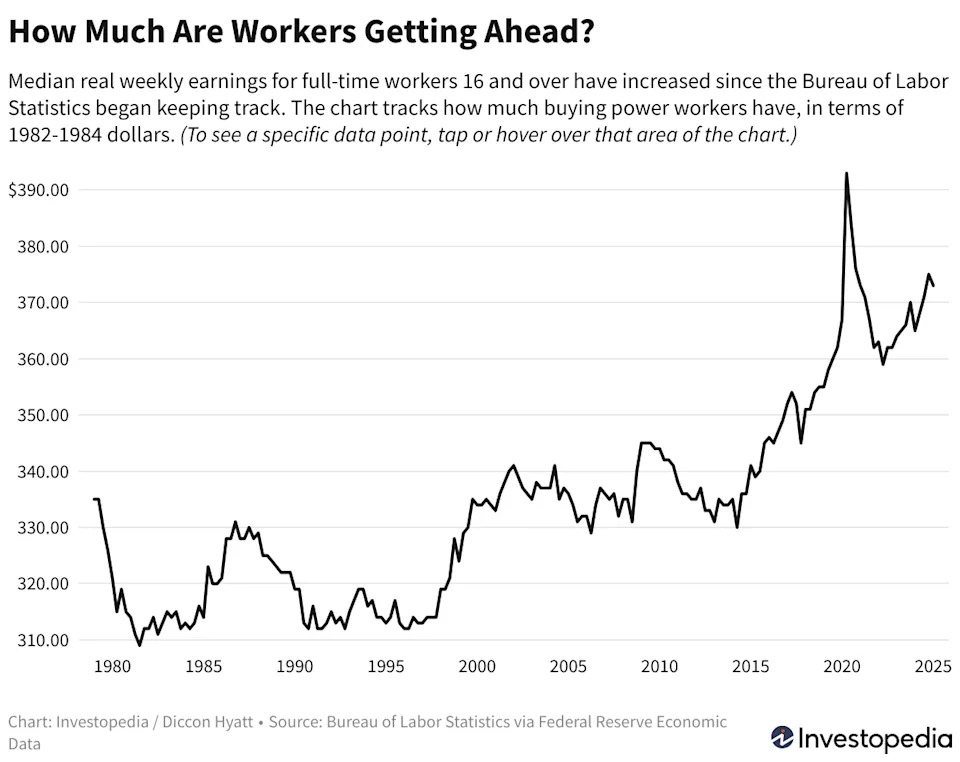News
Are Workers Getting Ahead In Trump's Economy? One Statistic Will Tell

Key Takeaways
Amid all the economic ups and downs so far this year, there's one economic statistic that tells whether workers are doing well.
Out of the thousands of bits of data produced by the government, "real earnings" could be the most significant measure of how the U.S. cost of living is changing for workers. The real earnings adjust a typical worker's pay for inflation to give a rough idea of how much you can buy with an hour's work.
The White House highlighted a jump in real earnings late last week. The administration used the measure to show President Donald Trump's economy was friendly to workers in the early days, despite fears that his tariffs would raise prices for everyday purchases.
Real average hourly earnings in April were up 1.9% over the previous 12 months. That means that paychecks ended up going a bit farther after all the price fluctuations and salary changes over the year.
Inflation has stayed relatively tame lately, while wages have risen solidly over the last year under both Trump and his predecessor, Joe Biden.
As Trump's economic policies go into effect in the coming months, real earnings could provide a valuable benchmark for judging progress. Many economists predict that the higher and longer Trump keeps the
tariffs he imposed
, the greater the risk that prices will rise. At the same time, the economy is expected to slow, which could damage the job market.
By a slightly different measure of real earnings, the new administration is slightly behind the eight-ball. According to real median weekly earnings for full-time workers 16 and over, purchasing power fell by two dollars a week in the first quarter of 2025.

Real wages are measured in 1982-1984 dollars. In other words, the first quarter's typical weekly wage of $1,194 has the same buying power as $373 did in the early eighties. Weekly earnings are medians instead of averages used in the hourly measure, making them a better snapshot of the typical American's purchasing power.
Real earnings statistics may be more useful for comparing economic progress these days than they were during the Biden era. Real earnings were distorted during the pandemic when millions of lower-paid workers were laid off, leaving higher-paid workers on payrolls, artificially pushing the average pay rate.
In recent decades, real earnings have fluctuated but have mostly increased slowly over time. During that time, the economy has become more productive, allowing people to purchase more with their salaries. Since 1979, the first year the Bureau of Labor Statistics tracked the data, real weekly earnings have been up 11%.
Read the original article on Investopedia

